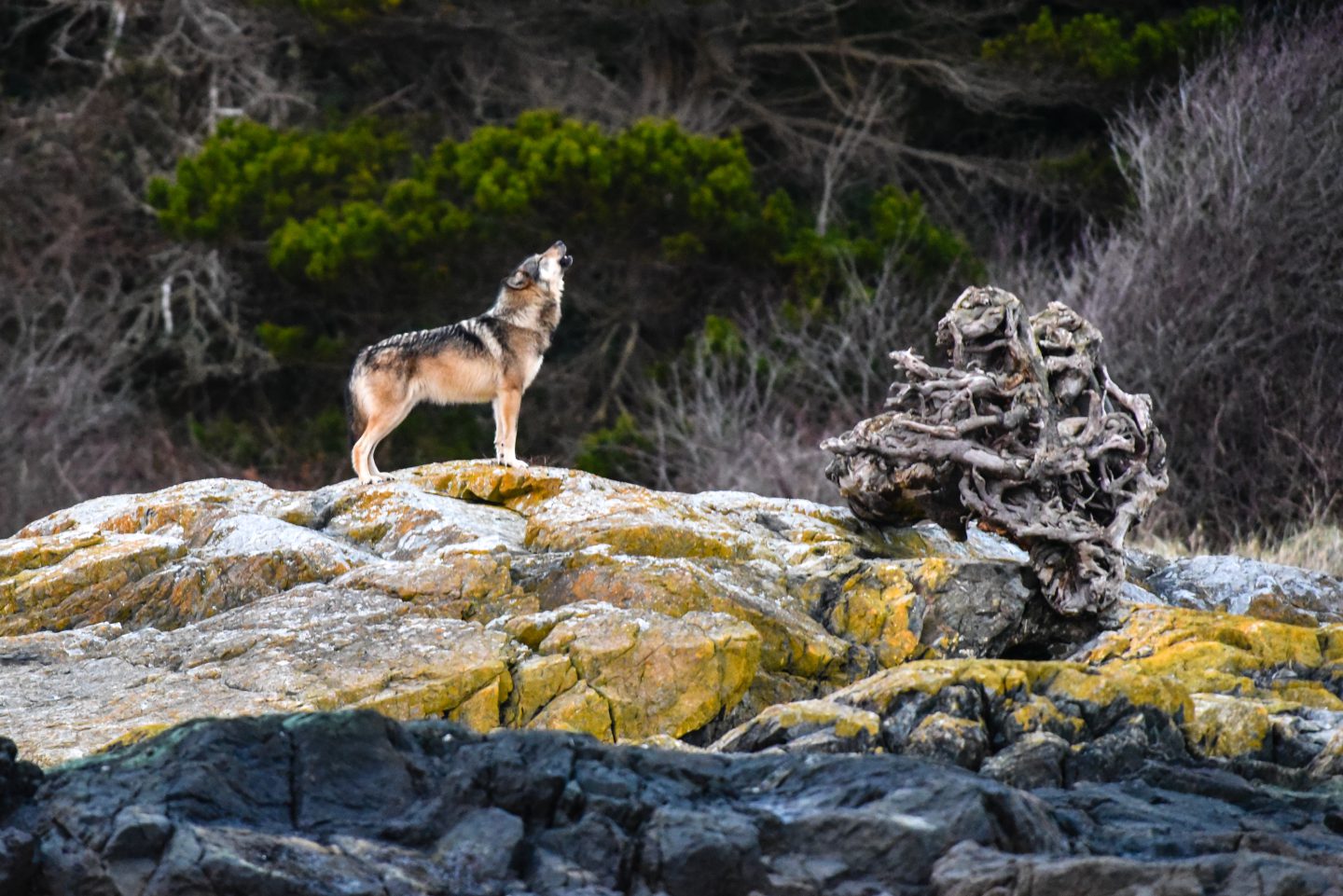Takaya traverses his territory, a suburban area of Victoriavisible in background.
The second thing that Takaya was searching for was territory that contained a reliable source of food. A stable food base is really significant for a wolf — especially one on his own. This was likely a little challenging for him in this island ecosystem. It is most likely that his early life with his natal pack primarily involved hunting deer, elk and other small land mammals. This new territory required that he adapt to and figure out how to hunt a new kind of prey, and rely on an almost completely marine mammal diet.
Takaya’s new chosen habitat had no deer or other ungulates like elk or moose, and no small land mammals like rabbits, squirrels, racoons or beaver. His typical prey didn’t exist, so what was he going to eat?
Very quickly Takaya would have begun to develop a complex understanding of his territory. He would have traversed each nook and cranny of it and begun to learn every detail of the landscape. It is obvious now, after almost nine years, that he knows every stone and tree as well as the movements and possible locations of his potential prey: under which pile of beach logs he will find otters; where the seals will haul out; where they may leave their pups. He knows where, when and how to lie in wait. To begin with, however, he would have had to observe and learn.
These islands also have no year-round source of fresh water. There are some swamps and vernal ponds on three of the larger islands which fill during rains, but in times of drought during the summer and fall months, these often completely dry up. What would Takaya drink then?
And then there was the third item on Takaya’s list — a mate. But there are no other wolves in this territory, or even very nearby. The nearest wolf packs live more than 40 kilometres away and the sea and a city separates him from them. Where would he find a mate?
In the 1990s, Jamie Dutcher, with her husband, Jim, had dedicated her life to raising a pack of wolves in Idaho, filming and studying them in intimate detail over six years. The pair developed extensive knowledge of the social lives of wolves. I invited Jamie to the islands to see Takaya and to get her thoughts on why he came to the islands, as well as why he stays. She told me a wolf will most often leave its natal pack at about 2 to 3 years of age because of a deep-held urge to strike out and start its own family. These are the would-be alphas who recognize that their pack already has a strong alpha, a fact that prevents them from becoming one.














